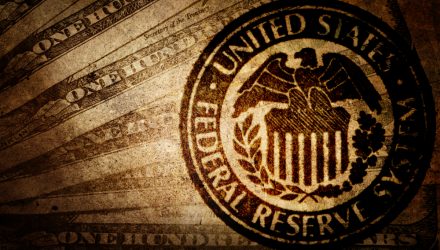It was only a few weeks ago when the sky was falling because bond ETFs were trading at a perceived discount. Now the sky is falling because they’re trading at a perceived premium.
The big issue here, of course, is that the Fed “clarified” that they might, in fact, be buying some junk bonds. But details count, and I feel like some folks are missing a few pieces of the actual statement from last week (which you can download here.)
First, the core plan is still to buy investment-grade bonds. They expanded that definition to include bonds rated BB- currently (the very best of junk) as long as they had been true investment grade before March 22. On the surface, this makes sense. They need to pick some line in the sand, or they risk ending up churning their portfolio each time a bond gets downgraded. That wouldn’t be market stabilizing, it would be destabilizing. So I get that part.
But there are caveats. The first is that no issuer can have their debt purchased by the Fed if they are getting any support from the CARES Act so recently passed. This means that dozens of companies, if not more, who might otherwise really love to have their bonds bought up are going to be out of luck. That for sure rules out airline bonds. Not much of this debt is in the significant investment-grade ETFs at the moment, and the sub-investment grade airline bonds are a tiny part of the junk market. This prohibition goes for ANY kind of federal aid, so if a new bill gets passed in a few weeks that, say, bails out auto manufacturers or hotel chains, they too will be off the list. Banks are also excluded from being in the mix.
The possible way around all of this “in-or-out” is, of course, the part of the program where the Fed will be buying ETFs. The thing that shocked the high yield market was the inclusion of this language in the April 9 statement:
“Eligible ETFs. The Facility also may purchase U.S.-listed ETFs whose investment objective is to provide broad exposure to the market for U.S. corporate bonds. The preponderance of ETF holdings will be of ETFs whose primary investment objective is exposure to U.S. investment-grade corporate bonds, and the remainder will be in ETFs whose primary investment objective is exposure to U.S. high-yield corporate bonds.”
That single line about the “remainder” got everyone excited. And like clockwork, a bunch of people (or algos) hit the buy button on the most likely target of such any junk bond ETF buying: the iShares iBoxx High Yield Corporate Bond ETF (HYG), and now it’s trading above its last Net Asset Value:

Source: Bloomberg
But here again, I feel like people are missing a few things. First, as I’ve written about (it feels like endlessly), this 4.5% premium is a bit of a phantom. Junk bonds are still illiquid, and between April 7 and April 9, almost $700 million in new money came into the fund. That means actual Authorized Participants had to go out and source those bonds. You see some of that in the NAV (which was sharply up Friday) but as always, not enough, because bond NAVs always lags cash prices. One way of interpreting the 4.5% premium is to say, “that’s what real-world collection of the creation basket cost” vs. what the entire portfolio was marked at by the bond pricing service/index provider at the end of the day.
So what else is missing from the handwringing? First, there’s no world in which the Fed (through Blackrock) is going to buy HYG at a premium. They can’t. The fed guidance explicitly prohibits the program from buying any ETF over NAV. The second huge miss here is that the program can’t buy an ETF if the purchase would push the Fed’s ownership over 20%. At current assets, that means the most the fed could buy would be about $3 Billion of HYG. I get that people think any number that starts with “B” is huge, but to put it in perspective, two days flows in March would have covered that much buying.
So perhaps we could all just chill a bit. Yes, it’s unprecedented to have the Fed buying corporate debt of any kind, but the actual impact on the ETF side of things is going to be pretty ho-hum. To me, the much bigger question is one that nobody in Washington is even talking about yet: How are we going to fix the structure of the bond market?
‘Cause boy, does it need fixing.
For more market trends, visit ETF Trends.

